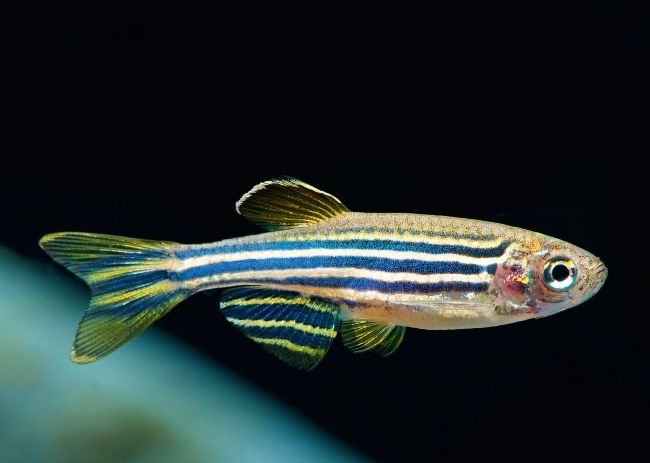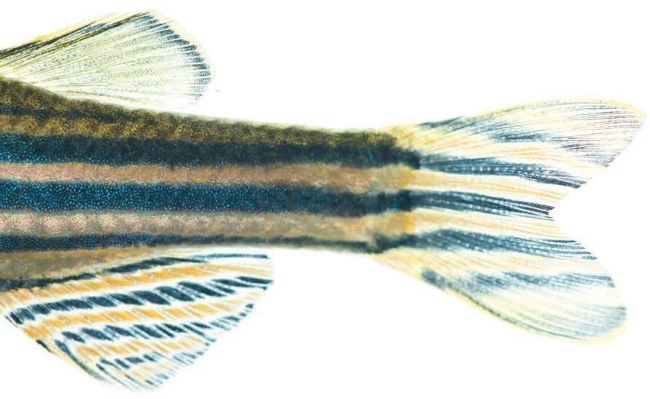TROPICAL Danios
DIAGNOSING DANIOS
Imports in recent years have increased the number of Danio species available. We offer a visual guide to picking out some of the newer arrivals.
WORDS: NATHAN HILL, ILLUSTRATIONS: MADHUSUDHAN GUNDAPPA

The commonest of all, Zebra danio, Danio rerio.
ALAMY

ALAMY
AH, DANIOS. Unsung heroes of fishkeeping and beyond. Back in the hobby’s dark ages, when folks were still using ‘invincible’ live fish to cycle new aquaria, it was a toss-up between Zebra danios or mollies to be the sacrificial lambs; able to produce the ammonia needed to mature a set-up, but hopefully tough enough to withstand it at the same time. On this second point, many weren’t.
Outside of home aquaria, the humble Zebra danio is also up there as one of the most important animal testing models on the planet. Hundreds of labs around the world rely on a constant supply of the fish — fish tailored at a genetic level to highlight some specific medical use — in the war on cancer, diabetes, even blindness. They have been pumped full of ketamine to study neural development, blasted into space to investigate muscle degradation, and implanted with coral and jellyfish genes to make them into fish that glow under ultraviolet light.
Traditionally, there weren’t that many species available to us in the hobby, and a lot of that was down to the provenance of danios. In recent years we have been blessed by several new discoveries and imports, with a considerable number hailing from Myanmar, a country that has long endured a bristling and less than smooth relationship with the west.
After nationwide reforms in 2010 things became a bit better, but as I write this I see articles of tanks on the streets, military coups and a population back under subjugation. Expect no further discoveries for the foreseeable.
What’s in it for me?
Danios are outstanding community fish with a twist — many of them are subtropical and require temperatures of 18-20°C. For the fishkeeper who has dabbled in everything, danios are the next new avenue to explore. Danio biotopes are simple to set up.
Hillstreams and forest rivers can be as scant as sand, then gravel, then pebbles, then a couple of larger rocks. Add some flow at one end — nothing crazy, just some extra movement — and stock alongside the likes of subtropical Rasbora, Garra, Pangio, Aplocheilus, Badis or Pethia. That’s a whole new biotope dimension right there.
Spawning with most species involves setting up a tank with a base of marbles or cobbles and little else. Danios are egg scatterers and all you need to ensure is that they can’t get down to their eggs once they’ve laid them. Even a coarse mesh will work; anything that will keep the parents’ mouths away.
In a community tank, most species are impeccably suited, but will struggle being kept at tropical temperatures. By which I mean they just die young.
Still, from a behaviour perspective, almost every danio is ‘tankmate blind’ and only interested in sorting out disputes within the hierarchy of its own species. Nipping is rare, hostility unheard of, and as dither fish there’s pretty much nothing better. These fish dominate the surface and upper levels of a tank, and the only way to get them down lower is when they’re chasing food. Now, let’s look at some of the new species doing the rounds…